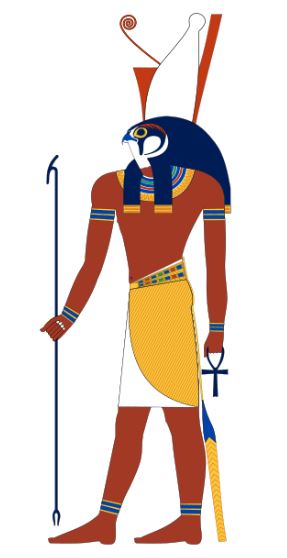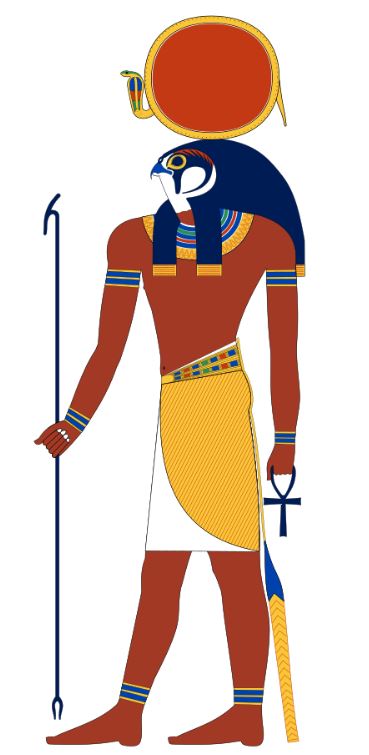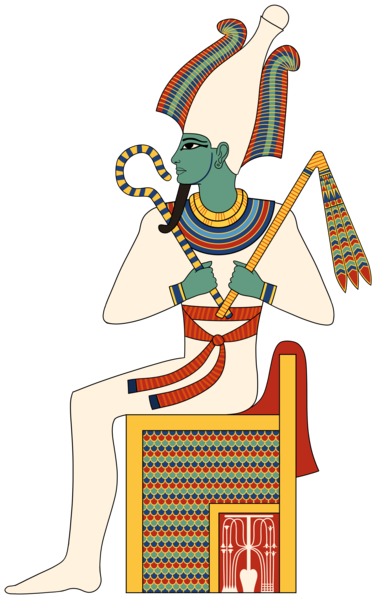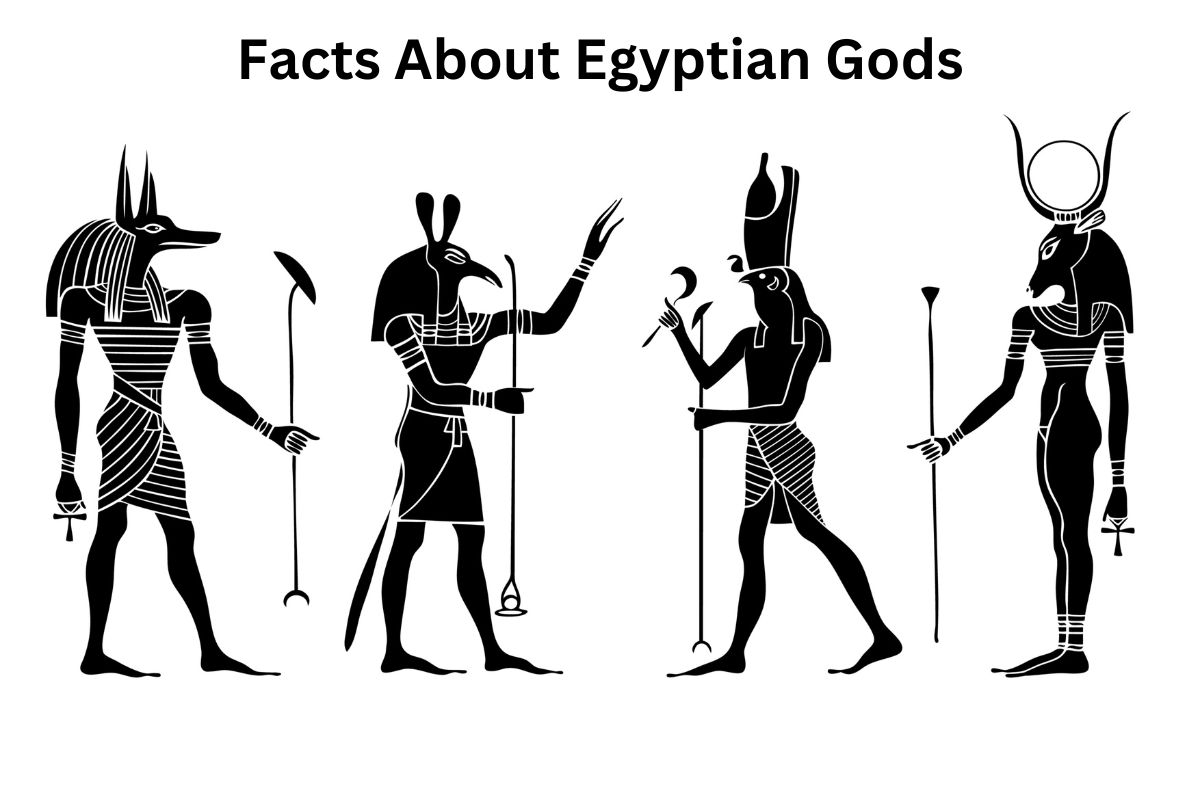The gods of ancient Egypt were a central aspect of the civilization’s religious beliefs and mythology. These deities were believed to govern various aspects of life, including natural forces, fertility, death, and the afterlife.
The ancient Egyptians worshiped a pantheon of gods, with each deity having a specific role and associated symbols. Some of the most well-known Egyptian gods include:
- Osiris
- Ra
- Isis
- Horus
- Anubis
These gods were often depicted with human bodies and animal heads, symbolizing their connection to nature and specific attributes. The worship of these gods involved elaborate rituals and ceremonies performed in temples by priests.
While the Egyptian gods played a significant role in ancient Egyptian society, their worship gradually declined with the rise of Christianity and the decline of the civilization. Today, they are primarily studied and revered as part of the historical and cultural legacy of ancient Egypt.
Egyptian Gods Facts
1. Egyptian gods were an integral part of ancient Egyptian religion and mythology
Egyptian gods were an integral part of ancient Egyptian religion and mythology. The ancient Egyptians believed in a complex pantheon of gods, and their religious beliefs permeated all aspects of their daily lives.
The gods were seen as powerful beings who controlled various aspects of the world, and the ancient Egyptians sought their favor through rituals, offerings, and prayers. The gods were considered both benefactors and protectors, providing guidance, blessings, and assistance to their worshipers.

2. The most well-known Egyptian gods are Osiris, Ra, Isis, Horus, and Anubis
The most well-known Egyptian gods encompassed a wide range of domains and attributes. Osiris, the god of the afterlife and the ruler of the underworld, held a prominent position in Egyptian mythology.
He represented resurrection and eternal life, and his story revolved around his murder by his brother Set and his subsequent resurrection by his sister-wife Isis. Osiris became a symbol of rebirth and the promise of an afterlife for the deceased.
Ra, the sun god, was one of the most significant deities in the Egyptian pantheon. He was associated with the sun and its life-giving properties. Ra was often depicted with a falcon or a sun disk on his head and was believed to travel through the sky during the day, descending into the underworld at night.
Isis, the goddess of magic, motherhood, and fertility, played a crucial role in Egyptian mythology. She was known for her powerful magic and her role in helping Osiris resurrect and conceive their son, Horus. Isis was revered as a protector and healer, and her worship extended beyond Egypt to other parts of the ancient Mediterranean world.
3. Each Egyptian god had a specific role and associated symbols
Below are just a few examples of the many Egyptian gods and their associated symbols. The depictions and symbols helped the ancient Egyptians identify and connect with specific gods and their roles in the cosmic order. They served as visual representations of the gods’ characteristics, attributes, and spheres of influence.
- Osiris – As the god of the afterlife and the ruler of the underworld, Osiris was often depicted as a mummified figure, symbolizing his association with death and resurrection. He also carried the crook and flail, which represented his authority and kingship.
- Ra – Ra, the sun god, was depicted with the head of a falcon or as a falcon-headed figure. The sun disk, called the “sun eye” or “sun disk with outspread wings,” was a prominent symbol associated with Ra, representing the sun’s life-giving energy and power.
- Isis – Isis, the goddess of magic and motherhood, was often portrayed wearing a headdress with a throne or cow horns, symbolizing her divine motherhood and protective qualities. She was also associated with the ankh, the symbol of life and fertility.
- Horus – Horus, the god of the sky and kingship, was commonly depicted with the head of a falcon or as a falcon-headed man. The Eye of Horus, a symbol resembling an eye with markings, represented healing, protection, and royal power.
- Anubis – Anubis, the god of embalming and the protector of the dead, was depicted with the head of a jackal or as a full jackal. The jackal symbolized his association with cemeteries and the ability to guide souls to the afterlife.
- Thoth – Thoth, the god of wisdom, writing, and knowledge, was represented as an ibis or as a man with the head of an ibis. He was often depicted holding a writing palette and reed pen, symbolizing his role as the inventor of writing and the patron of scribes.
- Bastet – Bastet, the goddess of home, fertility, and protection, was commonly portrayed with the head of a lioness or as a lioness. She also carried a sistrum, a musical instrument symbolizing joy and fertility.
4. The ancient Egyptians believed in a complex hierarchy of gods, with certain deities considered more powerful than others
The ancient Egyptians believed in a hierarchical structure of gods, with certain deities considered more powerful and important than others.
At the top of the hierarchy was Amun-Ra, a combination of the gods Amun (associated with hidden power and fertility) and Ra (the sun god). Amun-Ra was considered the king of the gods, symbolizing the supreme power and creative force in the universe.
Other gods held specific roles and were associated with various natural phenomena, such as Ptah (creator god), Hathor (goddess of love and joy), and Thoth (god of wisdom and writing).

5. Many Egyptian gods were associated with animals and were depicted with animal heads or had animal forms
Many Egyptian gods were associated with specific animals and often depicted with animal heads or forms. These animal associations reflected certain qualities or aspects of the gods.
For instance, Bastet, the goddess of home, fertility, and protection, was frequently depicted with the head of a lioness or as a lioness.
Lions were seen as fierce protectors, and Bastet embodied these qualities. Sobek, the god of the Nile and fertility, was depicted with the head of a crocodile, symbolizing the ferocity and power of the Nile.
6. The Egyptians worshiped their gods through elaborate rituals and ceremonies
The worship of Egyptian gods involved elaborate rituals and ceremonies performed by priests in dedicated temples. Temples were considered the dwelling places of the gods and were constructed with intricate architectural designs and decorations.
Daily rituals, offerings, and prayers were conducted to maintain the harmony between the human and divine realms. The priests played a vital role in carrying out these rituals and acting as intermediaries between the people and the gods.
7. Egyptian mythology often included stories and legends about the gods and their interactions with humans
Egyptian mythology encompassed a rich collection of stories and legends about the gods and their interactions with humans. These myths explained the creation of the world, the origin of the gods, and various natural phenomena.
They also depicted epic battles, love stories, and tales of divine interventions. For example, the myth of Osiris and Isis conveyed themes of life, death, and resurrection, emphasizing the belief in an afterlife and the triumph of good over evil.

8. The Egyptian gods were not considered immortal in the same way as some other mythological deities
The Egyptian gods were not considered immortal in the same sense as some other mythological deities. They were believed to have a finite lifespan and could experience birth, growth, decline, and death. However, they also possessed the power of renewal and rebirth.
Osiris, for instance, died and was resurrected, symbolizing the cycle of life, death, and resurrection. This belief in the cyclical nature of existence tied closely with agricultural cycles and the annual flooding of the Nile.
9. The pharaoh of Egypt was believed to be a living embodiment of the god Horus during their reign
The pharaoh, as the ruler of Egypt, held a special relationship with the gods. It was believed that the pharaoh was a living embodiment of the god Horus during their reign. This divine association bestowed upon the pharaoh a divine status and authority over the kingdom.
The pharaoh was seen as the intermediary between the gods and the people, responsible for upholding ma’at (cosmic order) and ensuring the well-being of the kingdom.
10. With the rise of Christianity and the decline of ancient Egyptian culture, the worship of the traditional gods gradually diminished
Over time, the worship of the traditional Egyptian gods declined with the spread of Christianity and the decline of ancient Egyptian culture.
The rise of monotheistic religions and foreign influences led to a gradual shift in religious beliefs. Eventually, the ancient Egyptian gods ceased to be actively worshiped, and their temples fell into disuse.
However, the legacy of the Egyptian gods lives on through archaeological discoveries, historical records, and the enduring fascination with ancient Egypt’s rich mythology and religious beliefs. Today, they are primarily studied and revered as part of the cultural heritage and historical significance of ancient Egypt.
